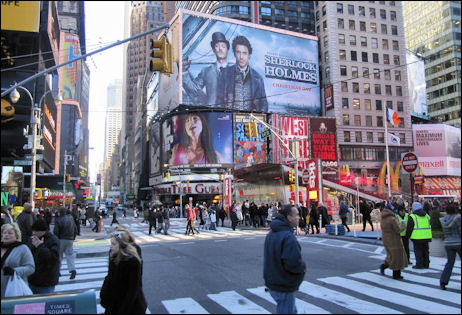“Guy Ritchie‘s hyperbolic Sherlock Holmes isn’t a movie — it’s a franchise,” writes New Yorker critic David Denby. “Or, at least, a would-be franchise. Arthur Conan Doyle‘s material has been grabbed by its velvet collar and thrown into twenty-first-century media culture. Such a turn was inevitable. The subdued charm of Conan Doyle’s hansom cabs, enveloping fogs and courteous manners, in which the facade of gentility is broken up so delightfully by devilish conspiracies, is not of our age.”
In other words, ladies and gentleman: Sherlock Holmes: The Coarsening and Degradation of Civilization As Your Fathers and Grandfathers Once Knew It.
“In Ritchie’s version, the facade doesn’t even exist: his London is rubbled and mucky, with beggars underfoot, and fouled by half-finished industrial monstrosities. Ritchie’s visual style, aided by the cinematographer Philippe Rousselot, is graphic-novel Victoriana: there are steampunk interiors — ironworks and infernal machines with a retrofuturistic look — and dim laboratories in which everything looks rank. The movie is grimly overproduced and exhausting, an irritating, preposterous, but fitfully enjoyable work, in which every element has been inflated.”

